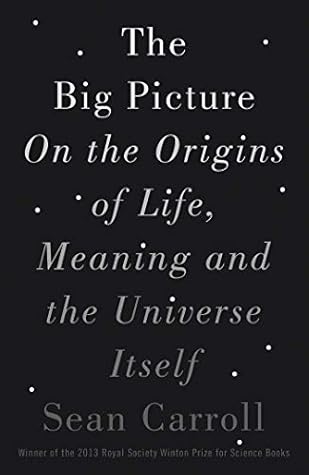More on this book
Community
Kindle Notes & Highlights
When we talk about the information contained in the book you are currently reading, what we mean is that these words are correlated with certain ideas
It is unclear why God would place such a high value on acting in ways that human beings can’t notice. This approach reduces theism to the case of the angel steering the moon, which we
considered in chapter 10. You can’t disprove the theory by any possible experiment, since it is designed precisely to be indistinguishable from ordinary physical evolution. But it doesn’t gain you anything either. It makes the most sense to place our credence in the idea that the divine influences simply aren’t there.
In Bayesian language, the likelihood of life appearing in the universe might be large under theism, and small under naturalism. We can therefore conclude that our very existence is strong evidence in favor of God.
The most important step is to determine the probability that we would measure various experimental outcomes under each theory. Easier said than done, given that there are many specific versions of both theism and naturalism.
If naturalism is true, what is the probability that the universe would be able to support life? The usual fine-tuning argument is that the probability is very small, because small changes in the numbers that define our world would render life impossible.
cosmological constant.
Stars run by nuclear fusion. The first step is when two protons come together and one of them converts to a neutron, creating a nucleus of deuterium. If the neutron were a little bit heavier, that reaction would not occur in stars. If it were a little bit lighter, all of the hydrogen in the early universe would have been converted to helium,
we don’t have reliable ways of judging whether the values of various physical quantities are likely or unlikely.
we don’t know that much about whether life would be possible
we might not have just a universe, but a multiverse. The physical numbers that are purportedly fine-tuned—even supposedly fixed constants, such as the mass of the neutron—could take on very different values from place to place.
anthropic principle,
cosmological multiverse.
Every one of those ways to hide the extra dimensions—what string theorists call a compactification—leads to an effective theory with different observable laws of physics.
In any particular region, inflation will eventually end—and when it does, we can find ourselves with a completely different compactification
If the eventual appearance of life were an important consideration for God when he was designing the universe, it is hard to understand why life seems so unimportant in the final product.
To get a more fair view of what theism would naturally predict, we can simply look at what it did predict, before we made modern astronomical observations.
human beings are part and parcel of the natural world, thoughts and emotions and all.
there does seem to be a kind of prime minister of the parliament, a seat of cognition where the inputs from many modules are sewn together into a continuum of consciousness.
the ability to take time to contemplate multiple alternatives, breaking the immediate connection between stimulus and response—started to become selected for by evolution once we crawled up onto the rocks.
our imaginative faculties grew out of the evolutionary pressure in favor of developing the ability to weigh competing options for our future actions.
semantic memory,
episodic memory,
Episodic memory and imagination engage the same neural machinery.
When we remember a past event, the brain pulls out the script and puts on a little performance of the sights and sounds and smells.
MEG machine: magneto-encephalography.
these probes attached to my skull could sense me thinking. What we call a “thought” corresponds directly and unmistakably to the motion of certain charged particles inside my head.
it’s not the neurons themselves that encode information but the way they are connected to one another.
the network structure of the brain, known as its connectome.
connectome
small-world network.
Turing test.
Chinese Room
substrate independence—
there is something going on inside the person’s head, and we had better take it into account if we want to correctly predict how they will behave.
intentional stance.
theory of mind—
is helpful to have models of the world around you, including other organisms and their models.
mind-body problem: how can we hope to account for mental reality using only physical concepts?
The Easy Problems are about functioning; the Hard Problem is about experiencing.
“the Easy Problem (which is hard), and the Hard Problem (which is impossible).”
There are a number of thought experiments that try to illustrate how hard the Hard Problem really is. A famous one is Mary the Color Scientist,
philosophical zombie.
a naturalist but not a physicalist—we can accept that there
is only the natural world, but believe that there is more to it than its physical properties.
the physical things with which we are familiar can have other kinds of properties—there can be a separate category of mental properties. This view is property dualism, as distinct fr...
This highlight has been truncated due to consecutive passage length restrictions.
As long as zombies are conceivable or logically possible, Chalmers argues, then we know that consciousness is not purely physical,
Why do zombies lie all the time?
There is a part of the universe I choose to call “me,”
“I am experiencing redness.” This is a useful thing to say,


